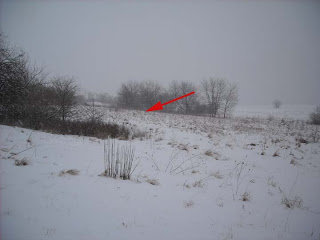Calling all Artists
This is a special year for the CSA, as we initate a new project, The Fair Share Farm CSA Art Competition. We are looking to tap into the creative energy of our membership, and find out what food means to you. Your fellow member Stacey Cook has volunteered for the daunting task of heading up this exciting venture.
We have started a website, www.fairsharefarmart.com, that we hope will soon be filled with artwork from members of all ages. The website outlines the basics to date: lots of art; a selection of the best adult, teen and kid entries by a panel of judges; and a showing of the winners at Bad Seed on the First Friday of September. Prizes to be announced, with 12 of them to hopefully grace a 2011 Fair Share Farm CSA calendar.
We would like to have every membership submit at least one piece of artwork. A photo, painting, poem, quilt, puzzle, dance, song or sculpture. Whatever medium best suits you to express your thoughts. We hope you will all join us in what is sure to be a fun community project.
And if you have any web design talents, we would love to have your help setting up our website, so that we can easily post all of the submissions for the world to see.
Tom and Stacey
In the Share
The items in this week’s share includes a couple new items, both well known to the seasoned CSA member. Hakurei turnips are the white, radish looking vegetable that is not a radish. While sweet and succulent are not words you might associate with a turnip, they apply to the Hakurei. Great raw or cooked, they are a wholesome treat.
Tat soi, that deep green rosette of a plant is from the general family we call Asian greens. Yukina savoy is from the same family, but with larger, crinkled leaves. From top to bottom they are edible, from the crunchy stems to the spinach-like leaves.
Enjoy too the nice photo of Tuesday’s asparagus harvest by our intern Emily.
Stir Fry Heaven
We’ve said it in the past, and will repeat it here–it is stir fry season for the CSA. This time of year the many wonderful vegetables of Asian cuisine are at their peak. Your chance to make a meal that will be tough to duplicate later in the year is now.
Stir frying is an art easily mastered by following some simple rules. If you know how to chop vegetables, add them to a pan, and stir, you are most of the way there. An excellent summary of the “rules” of stir frying, by Rhoda Parkinson, is a simple click away.
Fair Share Farm Spring Stir Fry
A recipe that uses 5 items from the share, it is a truly local dish. We can tell you too, that it made for a quick and delicious dinner tonight.
Remember that stir fry is a high heat cooking process, so keep the heat on. Also, as PBS cook Martin Yan says “it’s stir fry, not stare fry.” You need to be constantly stirring as you cook.
Ingredients
2 tbsp sesame oil
1-1/2 tbsp chopped ginger
2 green garlic (bottom half)
3 Hakurei turnips
1 bok choi
1 tat soi or yukina savoy
6 to 8 lovage leaves
cilantro for garnish
Sauce:
1/4 cup soy or tamari sauce
3 tbs water
2 tbsp rice wine vinegar
1 tbsp sesame oil
1 tsp red pepper flakes or 1/8 tsp cayenne
1 tsp sugar
1 tsp corn starch dissolved in 1 tbsp cool water
Method
- First step is to ready the ingredients. For the tat soi and bok choi you will want to chop the stems and the leaves separate. Likewise with the turnips, chop the white root and the tops separate.
- Combine the sauce ingredients in a bowl and set aside
- Heat a wok or large skillet, add the sesame oil
- Add the ginger, stir and cook for 30 seconds
- Add the turnips and green garlic, stir and cook for 2 minutes
- Add the bok choi and tat soi stems, cook for 1 minute
- Add the greens from the bok choi, tat soi and turnip, and the lovage, cook 1 minute
- Add the sauce and cook for 1 more minute
Serve immediately over hot rice and garnish with cilantro if desired.





















